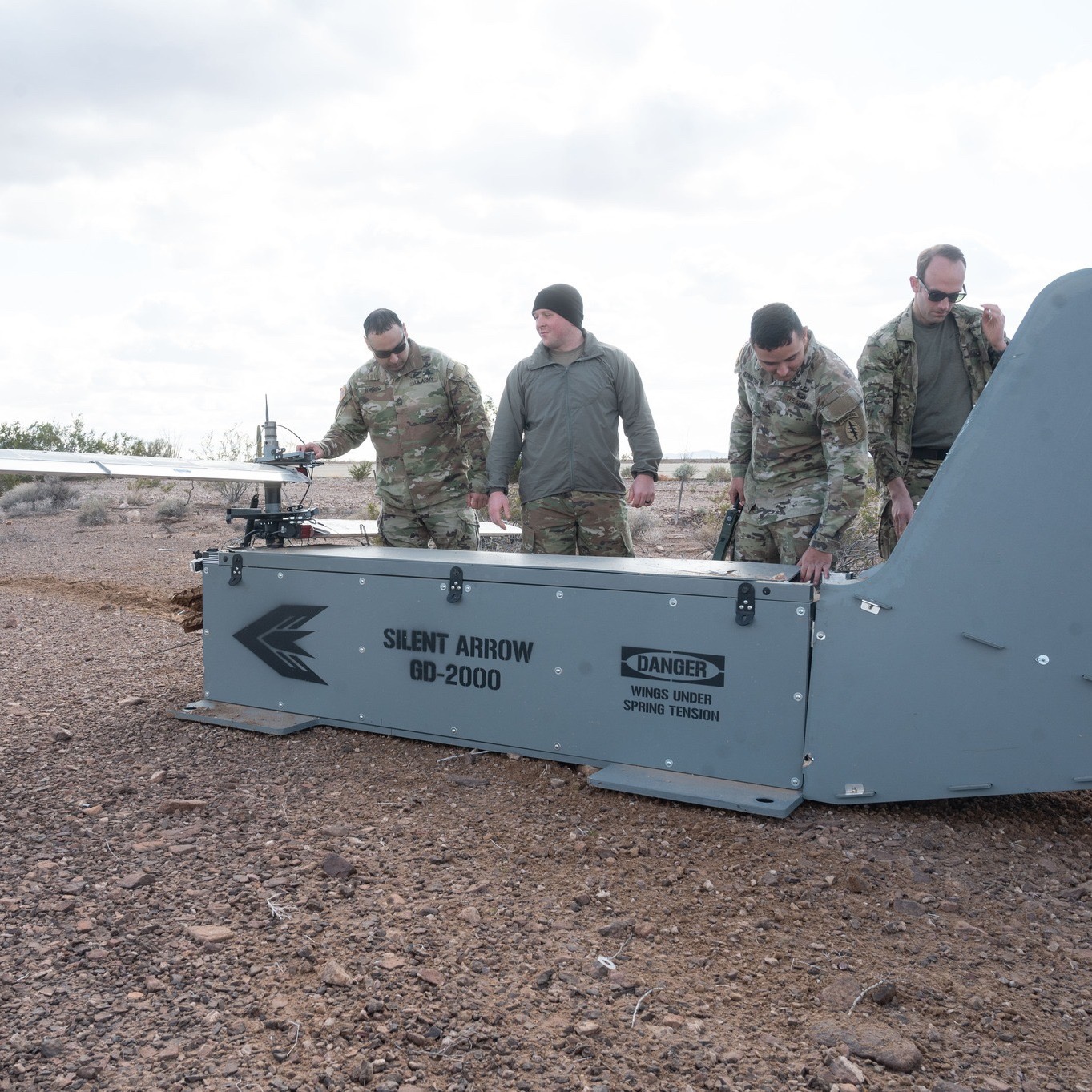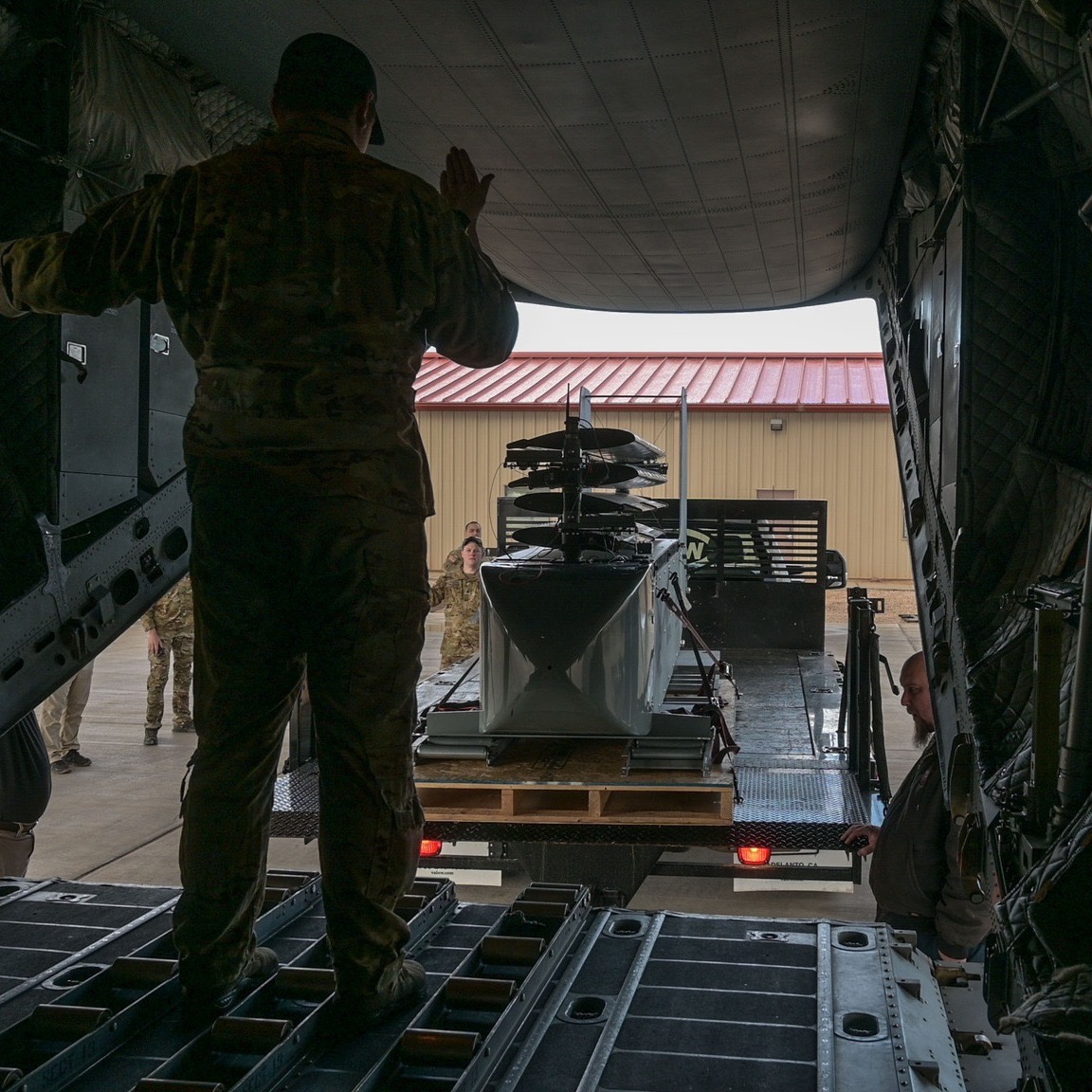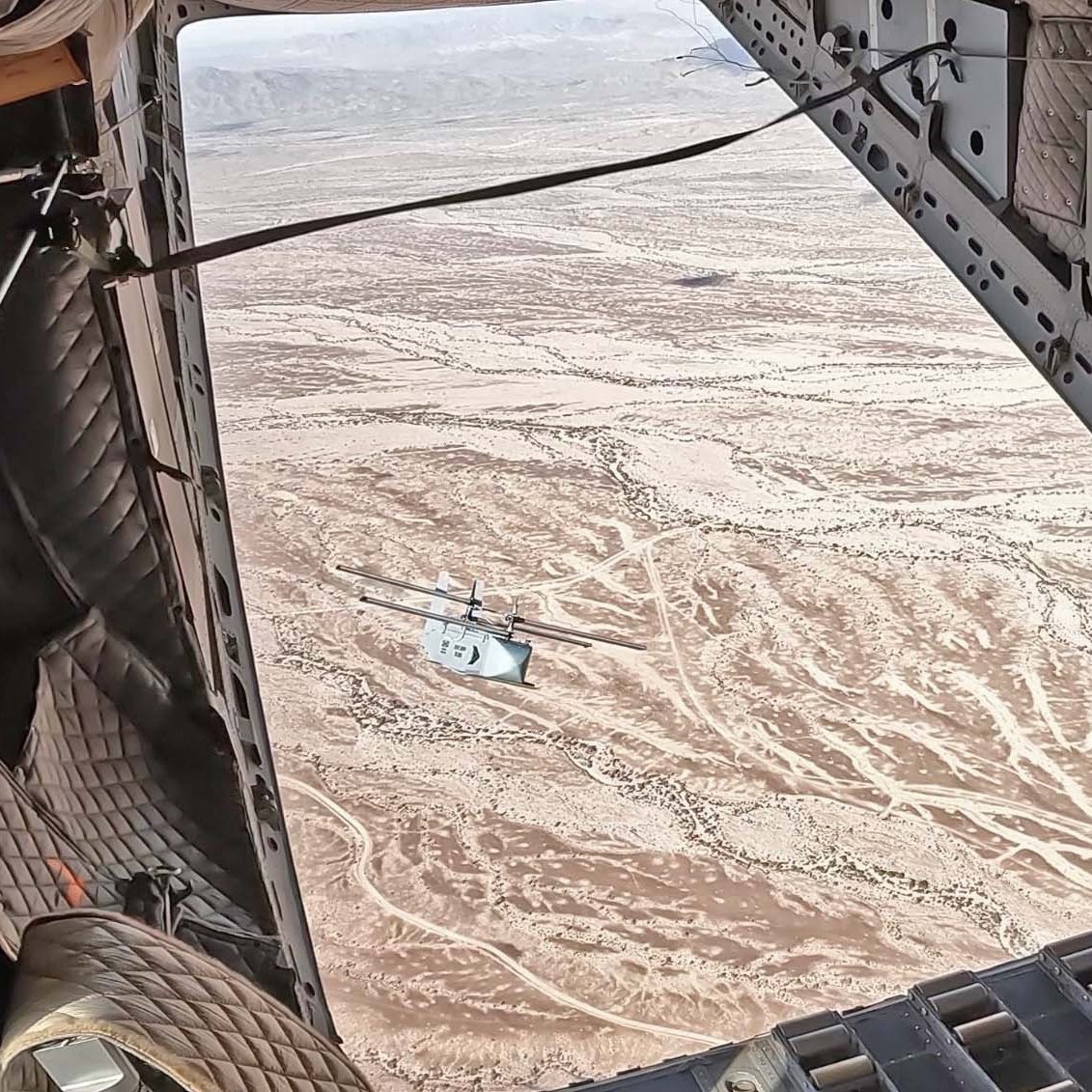
YUMA PROVING GROUND, Ariz. – In February 2023, 1st Special Forces Group (Airborne) successfully tested a new unmanned aerial delivery platform, the GD-2000 glider (glider disposable 2000 lbs.). This glider is an alternative to the current means of supply delivery into diverse environments. Implementation of the glider will result in enhanced capabilities of the Special Forces detachments deployed through varied, and often restrictive, terrain.
Timely and accurate resupply is imperative to the success of combat operations.

This success does not only lie with the operators on the ground but also with utilizing emerging technology. The GD-2000 is a glider platform that Special Operation Forces innovators hope will revolutionize aerial delivery to Green Berets in the field.
“It’s an autonomous aircraft that carries 1,500 pounds of payload,” said Chip Yates, CEO of Yates Electrospace, and the creator of the glider.
“It flies for 15 minutes, flares and lands where you want it,” he continued.
Traditional supply delivery systems can be more cumbersome and more detectable by the enemy when compared with the glider. It was birthed out of a request from the U.S. Marine Corps as an alternative to the Joint Precision Air Drop System (JPADS). JPADS tend to be both larger in size and have limited ability to maneuver through the air, making them less accurate, especially over long distances or in high-wind conditions.

“What this glider does is give us a much greater [travel distance] and a much greater glide ratio into a target,” said a Special Forces detachment commander, whose team tested the glider.
The GD-2000 is a small aircraft designed to land at a precise location while being released from a greater distance than traditional supply drops. The glider can travel up to 40 miles once released and is completely disposable once on the ground, allowing it to be left in denied or contested territory without compromising the security of the Soldiers receiving the supplies or the technologies or techniques employed by the U.S. military.
“If we are able to get [the glider] up to 40,000 feet we’re looking at [travel distances] in excess of 25 to 30 miles. That’s a pretty unique capability and not matched by anything we currently have,” the commander said.
This would also allow for aerial delivery to remote islands that require a greater level of precision to reliably reach their destination. With some modifications, the designer of the glider claims it can also land and be recovered in a maritime environment, further enhancing resupply capabilities to the sort of small islands often found in the Indo-Pacific.
During the testing, the GD-2000 carried a 1,000-pound payload and was airdropped from a C-27J plane. During several drops, the glider landed within 30 meters of its intended target at Yuma Proving Grounds, Arizona. The hull of the aircraft was still intact and protected the cargo inside.
“[The glider] gives us the ability to drop this from a plane outside of controlled airspace into international air space and fly resupply in from an unmanned autonomous craft. It’s a huge enhancement to the mission” the commander said.
1st Special Forces Group (Airborne) is committed to innovating beyond the status quo. Today’s tests and experiments are done to ensure that tomorrow’s problems do not catch us off-guard. Enhancing our capabilities fosters an environment of competency within the unit and allows for our Soldiers to continue the mission of maintaining a free and open Indo-Pacific.
Story by SGT Thoman Johnson, 1st Special Forces Group (Airborne)


Great technology. Hope the range is greater than current systems and can go beyond LOS.
Is it me or does it look big enough to put in a trooper and some LSE?
If you want the trooper to be a corpse when it lands yes
WWII was a test bed for glider operations by several countries, Germany, England, USA predominantly. Covert & low cost insertion / resupply options with today’s guidance technology could open up an array of options for todays military.
My father was a 17th Airborne Glider paratrooper who made the successful glider invasion of Germany in Operation Varsity (After fighting in the Battle of the Bulge & rescue of Bastogne)
He could speak intelligently on this technology today (he’s 99 and still lives on his own).
Simple – low cost & relatively low tech options can be VERY viable options in a high tech battleground.
I suppose this system could just as well be fitted with 1K lbs. of explosive ordinance, making it a potential lethal weapon for terrorists.
Terrorists with heavy lift air drop capabilities?
Why not just fly said heavy lift air drop platform there?
Drones are way cheaper for non state actors anyway
This is awesome. It won’t be long before the ASOM has another airborne statue to add along the walk way. Haha.
For real, this is legit if it gets added to operational use. It won’t replace JPADS but it’s another option to support the troops.
A $70,000 disposable munition to deliver $500 in MREs and ammo is totally on point for the military industrial complex.
This is why if world war 3 breaks out with China, China will win on cost alone.
If it saves the life of a serviceman who cost millions to train and equip, or enables that serviceman to operate in an otherwise denied environment and inflict pain on an enemy, it’s money well spent.
I see where your head’s at, but that isn’t really a good, big picture way to look at resupply technology/methods. An expensive way to carry cheap (but necessary) cargo, to sustain troops holding/taking a potentially priceless piece of terrain. There are certainly plausible scenarios in which the cost of *not* sending a $70,500 care package could be much higher than sending one.
At times cost of supply is not an issue. Sometimes any manner of supply is priceless. However, the cost of delivery may be opportunity cost. A limited mass of supply may be delivered by one aircraft and not flying over the delivery point has many advantages by forcing a wider search area. Sometimes economies of force are not the cost of an item; but, the cost forced upon an enemy.